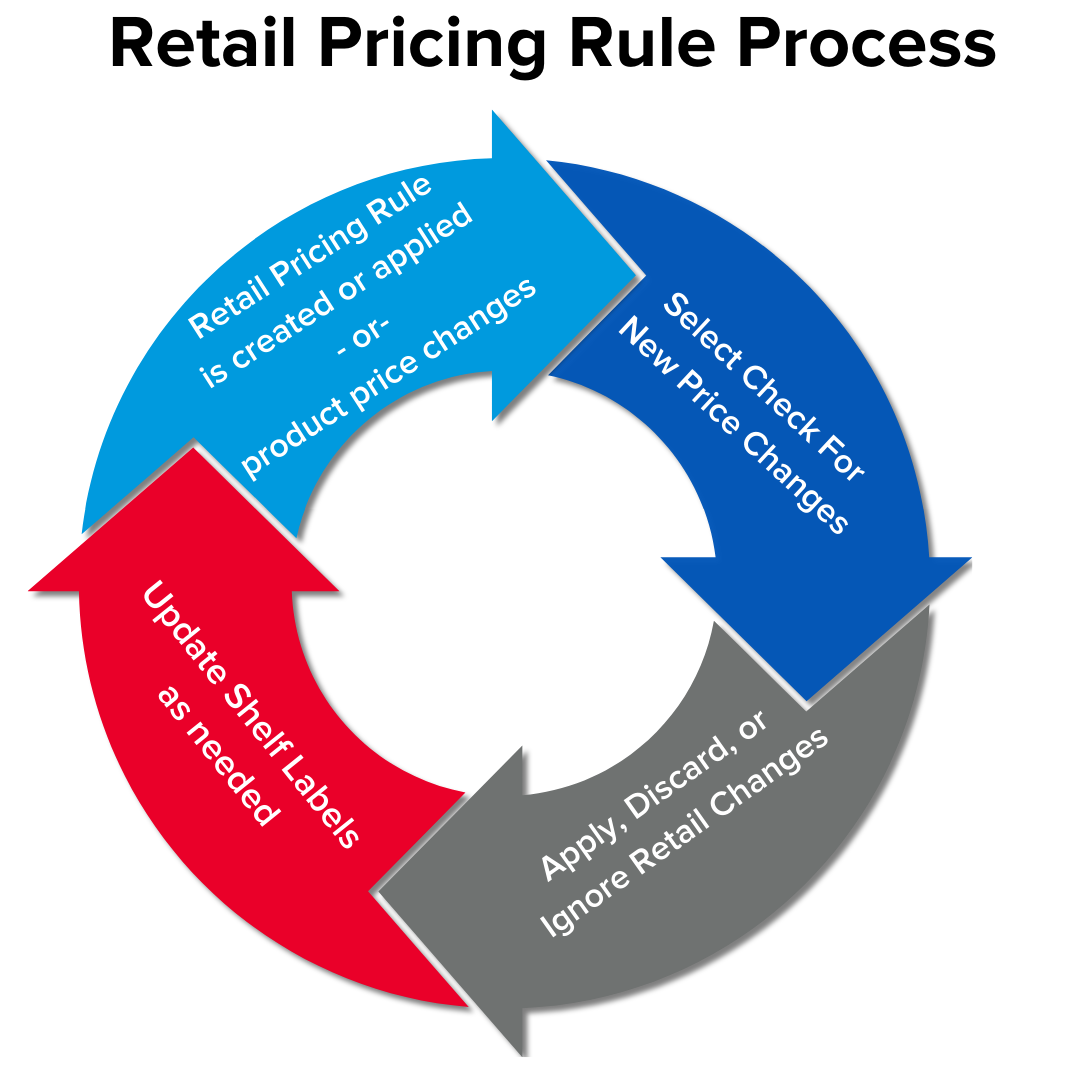Understanding the retail pricing rule process
Once a retail pricing rule is created and attached to a product or an entire category of products, it will do the heavy lifting for you by adjusting your retail prices as product costs change. This way, you are charging exactly what you need to charge to maximize your margins and markups.
The graphic below summarizes how the retail pricing process works.
Retail pricing rules do not update automatically as costs change (such as when you receive products from a supplier) or change or add a retail pricing rule on products. This is because most store managers want to the opportunity to evaluate the pricing changes before publishing, and to give them time to update product labels or menus when necessary.
For this reason, you must trigger the calculations by checking for retail price changes. This process can take up to 10 minutes to complete. Then, you can review the retail pricing changes and choose to apply, discard, or ignore the changes for a period of time. When you are ready, you can print new labels with the updated pricing.

Comments
Please sign in to leave a comment.